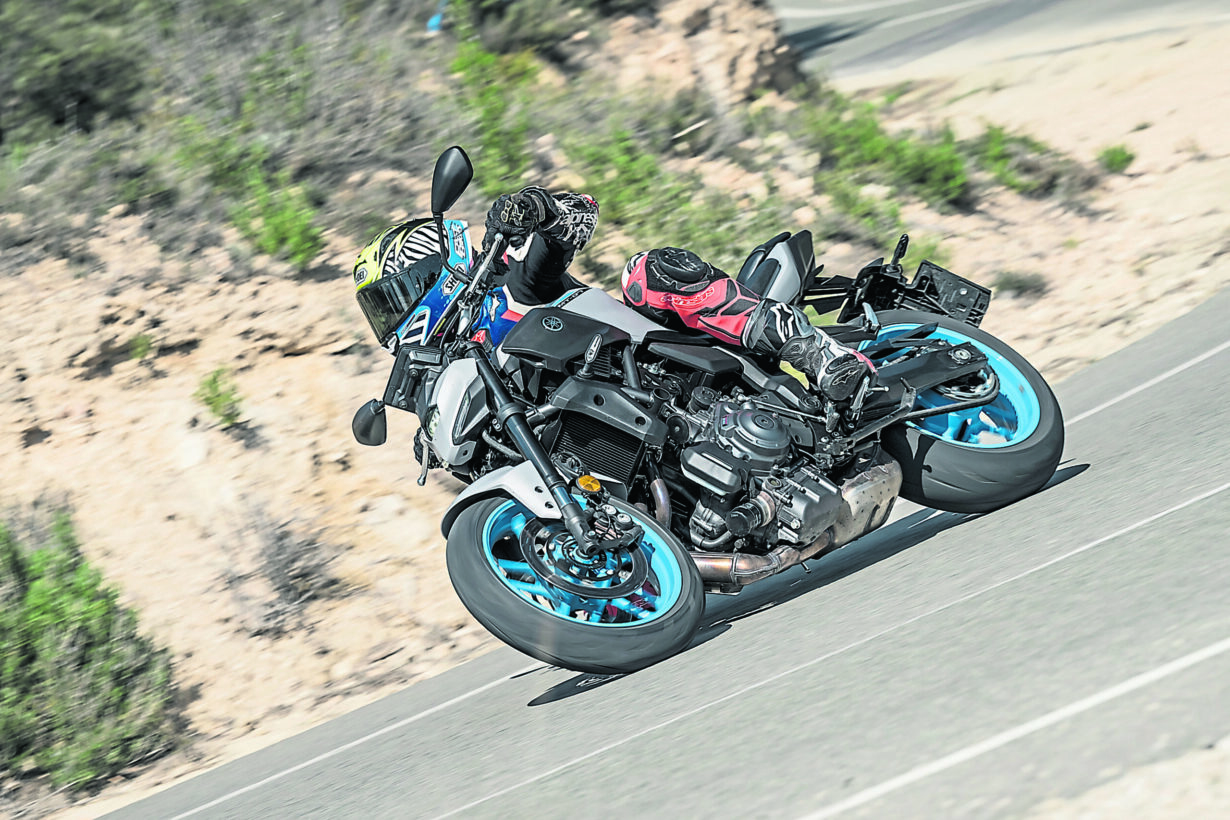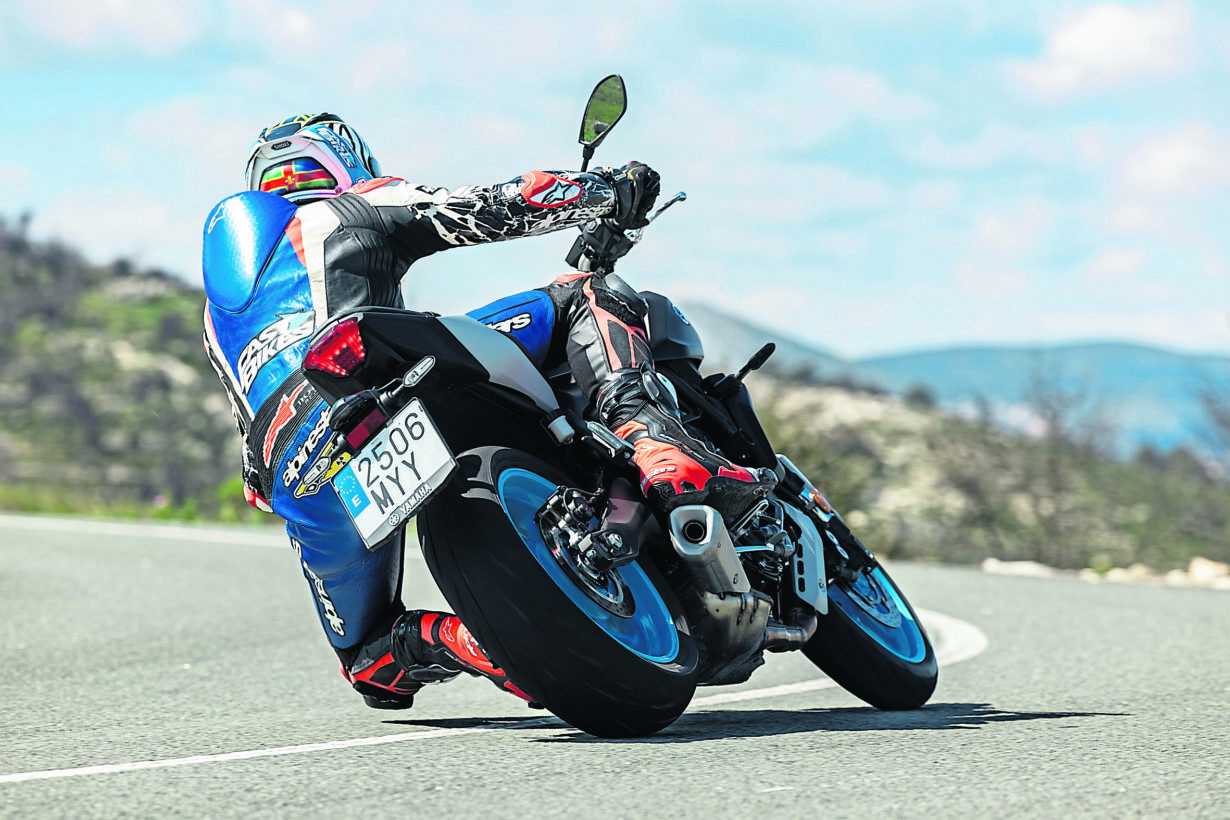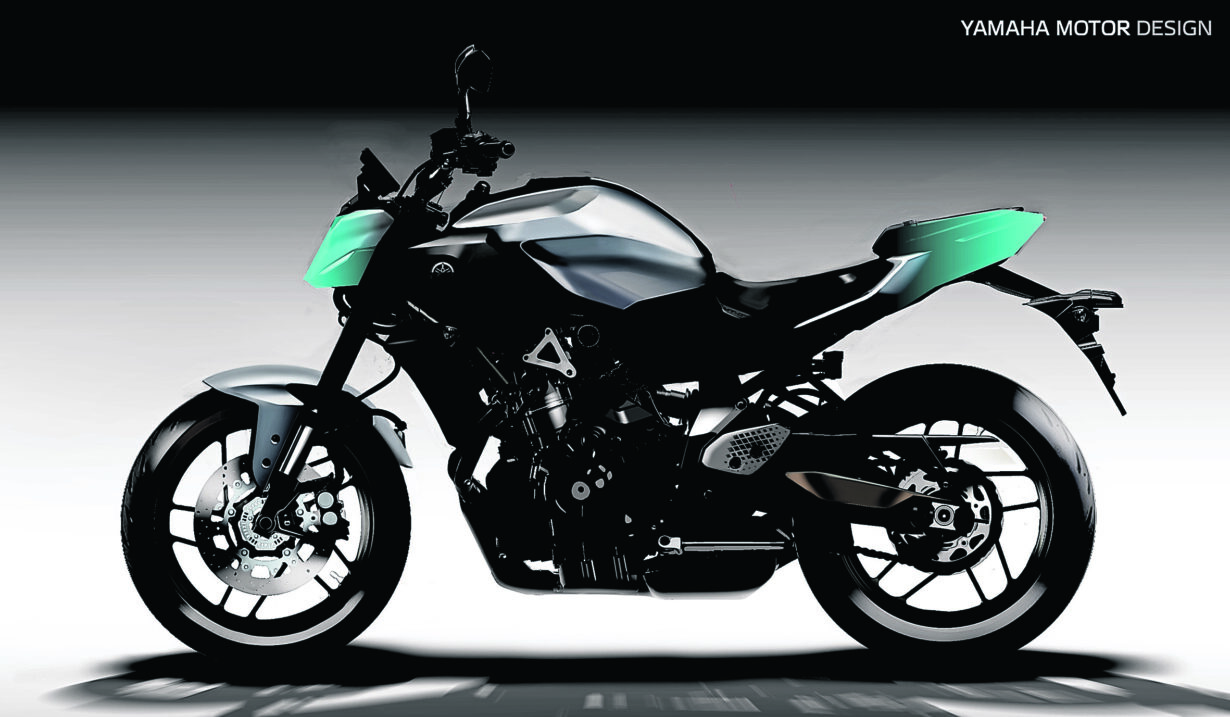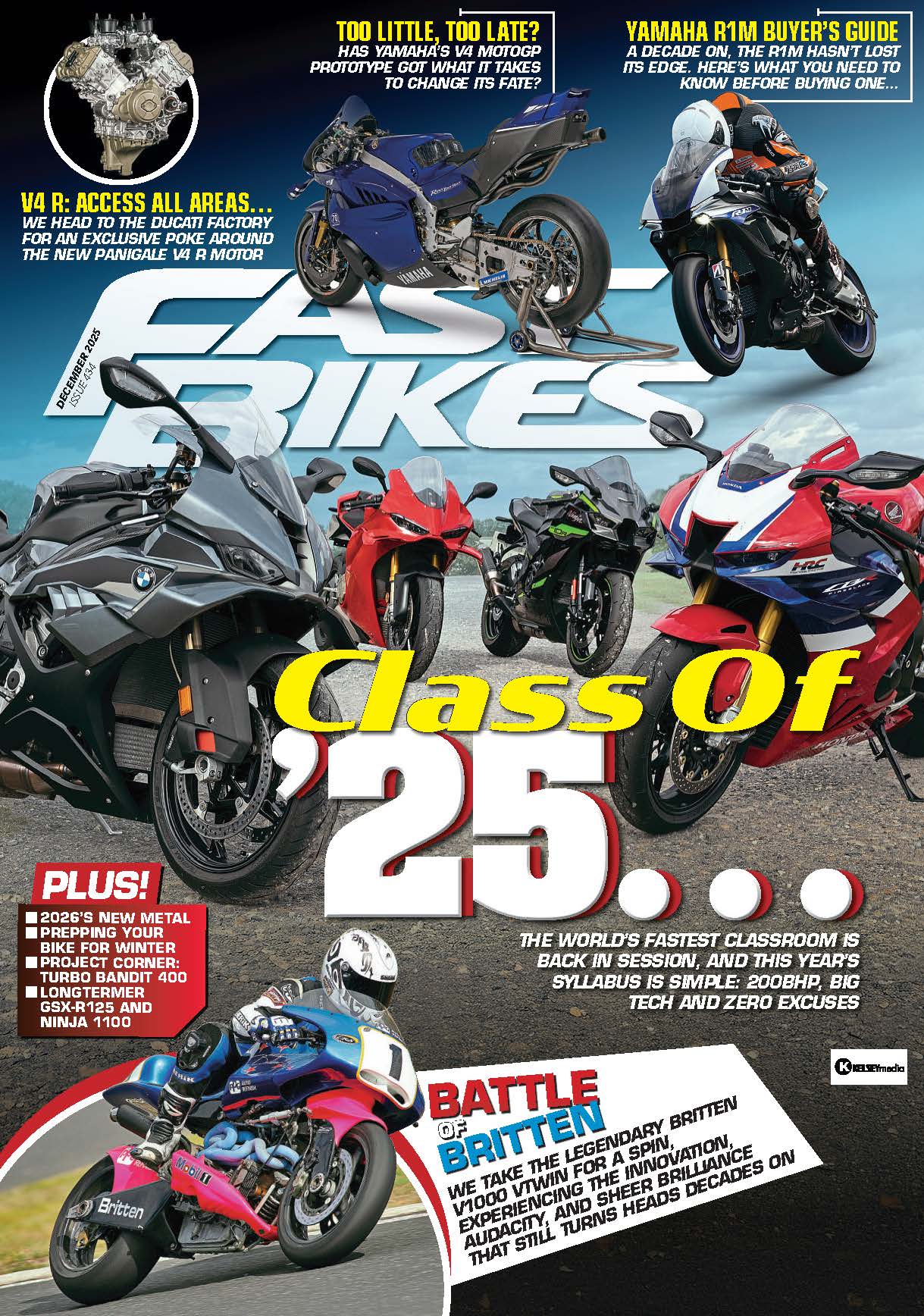Editor Bruce Wilson has put the MT-07 through its paces. Here’s what you need to know:
For over a decade, Yamaha’s MT-07 has proven a staple choice for those in search of a naughty, middleweight naked at real-world prices. To keep that case the same, the brand has cranked up the spec and tech of this much-loved protagonist.
You often find things you never knew you needed, which is perhaps a fair way to relate to Yamaha’s MT-07. Affordable, flexible, and as much fun as a free bar, it’s proven a massive hit for Yamaha, who’ve sold just under 200,000 of them in Europe over the last decade. From a commercial point of view, it’s been a massive success, and the accolades it’s achieved are impressive—not only being the brand’s best seller over 125cc, but also Europe’s most-sold naked bike for ten years in a row.

These are feats the Japanese brand is undoubtedly keen to maintain, so they’ve gone all-out in upping the ante of this fourth-generation protagonist. From an aesthetic point of view, it’s easy to spot how the image has matured. It looks more substantial than ever, mimicking styling cues from its big brother, the MT-09. Keeping it in the family, the bike’s face has been given a good seeing to, adopting a similar style projector main beam and aggressively styled twin riding lights. The rear seat is smarter too, while the bike’s 14-litre tank is narrower near the saddle for added rider comfort and control.
The MT’s ergonomics are now more affable thanks to 10mm lower pegs and bars that sit lower, closer to the rider, and are a little wider. Another dead giveaway of the bike’s evolution is the fitment of 41mm USD forks that sport twin radial four-pot calipers for added braking performance. Some people might not notice the new, lighter triple clamps, but they’re there—mounting the forks to a stiffer, heavily revised chassis. At the back of the bike, there’s a new, stronger swingarm, while Yamaha’s spin-forged wheels help lower the bike’s unsprung mass.
During the model’s presentation in the hills above Benidorm, the flow of tech and spec seemed pretty relentless. A big talking point was the MT’s transition to a ride-by-wire throttle. This didn’t just help engineers refine and improve the bike’s mid-range—it opened the door to modern tech. Rider modes, power modes, and switchable traction control are now included, along with a 5-inch dash.
One area of the bike that’s stayed pretty much unchanged over the last decade is the CP2 parallel twin motor. Okay, they’ve tweaked the gears for slicker transitions, but in terms of added oomph, there’s nothing drastic. It does, however, gain a new airbox and intake funnel, and the exhaust has been remastered to comply with Euro5+ legislation.

I’ll be honest—I hadn’t grasped just how much work had gone into the MT ahead of the model launch, but seeing the bike in the flesh got me excited to put it through its paces. Rightly or wrongly, the 07’s always been one of my favourite bikes to clock miles on, proving unintimidatingly brilliant and as much fun going through bends as it is wheelieing out of them. Yamaha made it clear they wanted to evolve the bike and attract a wider audience, and I only hoped that hadn’t come at the expense of its irresistible character.
Of course, the core of that charm has always come from the unexpectedly potent cross-plane motor that makes 72bhp and 68Nm of torque. That torque figure might not sound like much, but the CP2’s punch has always impressed me—and I’d have been gutted if that trait had been sacrificed for other advancements.
Hitting the roads, there wasn’t much scope to get the engine bouncing off its limiter at first. Instead, we had to appreciate its manners at slow speeds as we navigated traffic, roundabouts, and day-drinking pedestrians. Like a premeditated obstacle course, the route demanded relentless throttle control, and I was genuinely impressed by the bike’s smooth pickup. It felt instantly powerful and playful, yet lacked the harshness of previous MT-07s. Even in higher gears at low revs, the engine didn’t feel laboured.
I wanted to avoid gear changes, having quickly noticed the gearbox (without a quickshifter or blipper) felt harsh—to put it nicely. New bikes often take time for gearboxes to bed in, but I still wasn’t a fan and wished Yamaha had fitted the optional third-generation shift assist system like on the MT-09. That said, the more miles I clocked, the more I got used to the box, and once the roads opened up, the real fun of the bike came through.
Benidorm might seem an odd place to test bikes, but the mountains towering above it offer endless, empty twisties. These gave me a solid chance to learn about the bike. The Yamaha’s always been relatively light and nimble, but previous versions lacked decent suspension. I clearly remember the rear shock being underdamped, which limited the MT’s potential.
Thankfully, that issue is gone. The new unit is much more supportive and suited to corner-carving. The whole bike, front to rear, feels more refined and capable. Sure, a big bump could still make the MT buck like it was in a Benidorm nightclub, but it was largely composed and stable. The more I rode it, the more I liked it, encouraged by its communicative nature and consistent feel.
While the suspension is still fairly basic, it performs far better than its price tag suggests. Even if I could adjust the damping on the non-adjustable forks, I probably wouldn’t—the setup was that good. Whether the wider bars made a big handling difference is hard to say, but they definitely made the bike easier to hustle. The riding position also felt natural through corners.

As for the lowered pegs, they never grounded once—probably because I’m a lighter rider and tend to hang off the bike to increase ground clearance. Still, even heavier riders had no issues, which says a lot about the clever redesign.
Yamaha’s also done well with the engine. The latest fuelling setup is smoother than ever, making cornering more fluid. The refined CP2 is still full of zest, even with modest power figures. If you’re a big bike owner, you might wonder why I’m so fond of the little twin—but it’s got bags of charm, including a knack for wheelies in fourth gear with a touch of clutch. It handled the route with ease and even sounded good, thanks to its signature cross-plane bark. It would sound even better with the optional Akrapovic system teased during the launch.
Now for a less positive note: the back-torque at low speed was harsh, especially during downshifts. Dropping from third to second at high revs caused the rear to lock and squeal—right as I was tipping into a bend. It unsettled both bike and rider. Ironically, Yamaha told us the MT-07 had a new slip-and-assist clutch, but if I owned this bike, that would be one of the first upgrades I’d make. Experienced riders can manage, but for newcomers (which many MT buyers are), it could catch you out—especially on damp roads.
And then there’s the lack of a quickshifter and blipper. I kept cursing its absence. It only costs a few hundred quid more, but Yamaha likely avoided fitting it as standard to keep the bike’s price competitive. I get it—but it would’ve made the ride even better.

On the tech front, the 5-inch dash is a gem. It’s easy to read and operate thanks to Yamaha’s latest switchgear. I liked how seamlessly it connected to my phone to show Garmin maps, while still displaying key info like revs, speed, and gear position. Adjusting settings and switching modes was simple too—including disabling the traction control (read: wheelie limiter).
No, there’s no cruise control or heated grips—but that reflects the bike’s target market. It delivers in ways I genuinely didn’t expect, and to do so for £7700 is seriously impressive. As Yamaha said, their aim was to mature the MT-07 while retaining its core values. That’s exactly what they’ve done—perhaps the best part being that it’s now more fun and capable than ever.
SPECIFICATION:
Yamaha MT-07
Engine:
Type: 689cc, twin-cylinder, liquid-cooled
Bore x Stroke: 80mm x 68.6mm
Compression: 11.5:1
Fuelling: EFI
Claimed Power: 72bhp @ 8750rpm
Claimed Torque: 68Nm @ 6500rpm
Chassis:
Frame: Steel diamond
Front Suspension: Upside down, 41mm forks, non-adjustable
Rear Suspension: Monoshock with preload adjustability
Front Brakes: Four-piston monobloc calipers, 298mm discs
Rear Brake: Single-piston caliper, 245mm disc

Electronics:
Riding Modes: Yes
Traction Control: Yes
ABS: Yes
Quickshifter/Autoblipper: No
Wheelie Control: Yes
Launch Control: No
Dimensions:
Wheelbase: 1395mm
Seat Height: 805mm
Wet Weight: 183kg
Fuel Capacity: 14 litres
Info:
Price: £7700
From: www.yamaha-motor.eu




